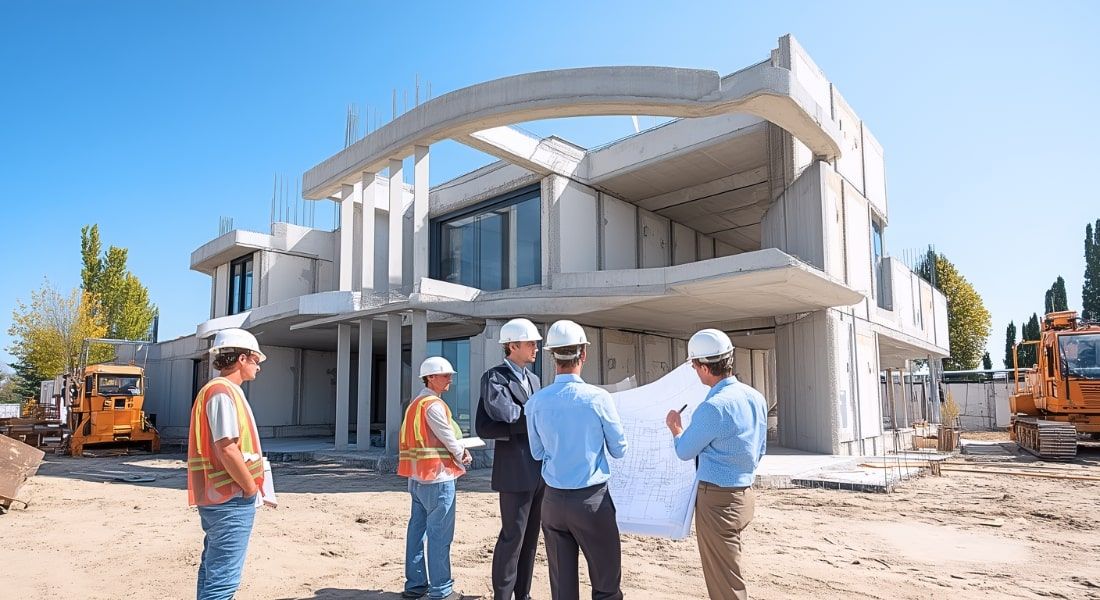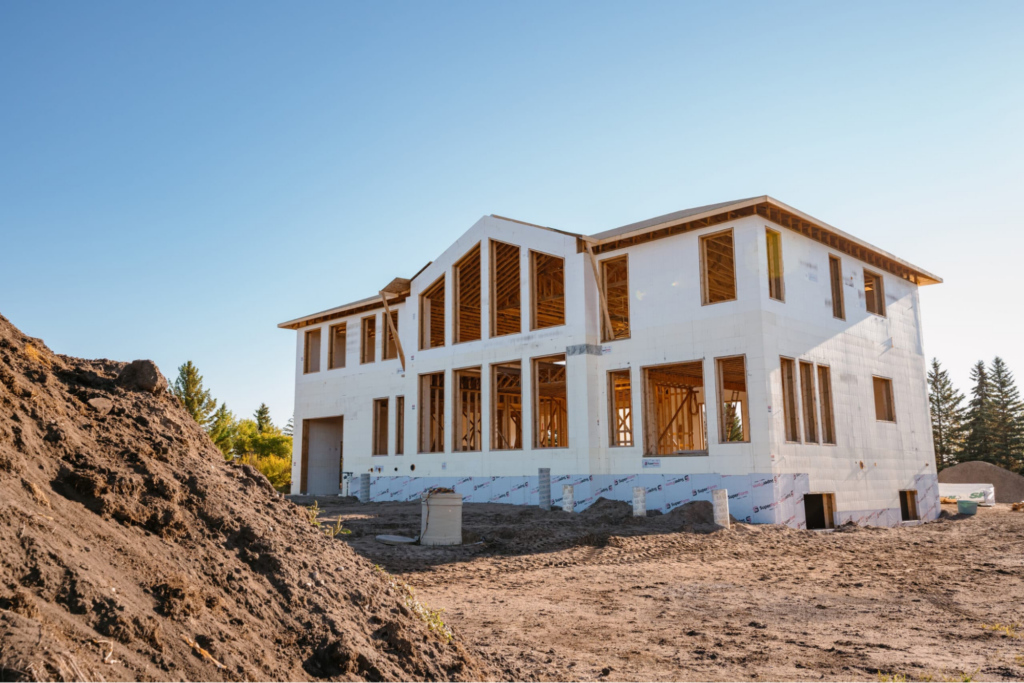How to Build Modern Homes Using the ICF Construction System
Modern homes require more than clean lines and open spaces—they need strength, efficiency, and long-term durability. That’s why more builders, architects, and engineers are choosing insulated concrete forms (ICF). The ICF construction system offers structural strength, energy efficiency, sound insulation, and design flexibility—all essential for high-performance, modern homes.
Traditional framing struggles with wide openings, cantilevers, and sleek minimalist styles. ICF Construction System meet these challenges head-on—offering both creative freedom and dependable performance.
Here’s a step-by-step guide to building a modern home with insulated concrete forms, from design to finishing.
6 Key Steps in Building Modern Homes Using the ICF Construction System
1. Optimize Design for Modern Aesthetics and Performance
Start with early collaboration—bring the architect, structural engineer, and the builder together from the beginning. That allows the team to fully leverage the system’s potential for modern design features like:
- Wide-open spans
- Curved or angled walls (8-foot minimum radius)
- Cantilevered upper floors (up to 4 feet)
Follow engineering best practices and product-specific guidance for structural elements. Pay close attention to load paths and reinforcement—especially for large openings or unusual shapes.
Design around large windows and doors with thermal considerations in mind. Modern homes rely on natural light and unobstructed views. Ensure the ICF layout supports these openings structurally while minimizing thermal bridging.
For openings wider than 8 feet, specify steel lintels with thermal breaks or insulated concrete lintels. Utilize thermally broken window frames and consider incorporating triple-glazed windows into high-performance designs.
For openings larger than 6–8 feet, consult the ICF manufacturer for recommended lintel design, reinforcement, and buck materials. Foam bucks or wood-composite bucks with integrated thermal breaks are ideal.
Select exterior finishes early. Each material affects the wall assembly thickness and attachment method:
- Lightweight finishes (stucco, EIFS): Direct application over foam, total wall thickness 10–12 inches
- Medium-weight finishes (fiber cement, brick veneer): Require furring strips, total wall thickness 12–14 inches
- Heavy finishes (natural stone, thick rainscreen): Need structural attachment to the concrete core, total wall thickness 14–16 inches
Not all ICF systems support every finish—verify compatibility with your chosen product.
2. Prepare the Foundation for ICF Precision
Start with an exceptionally level and square foundation. Use laser levels and maintain tolerances of ±1/4 inch over 10 feet horizontally and ±1/8 inch per foot vertically. ICF walls rely on precision from the base up—any misalignment will multiply as walls rise.
Embed vertical rebar into the slab or footing per engineering drawings. These dowels must align with the internal cavities of the ICF blocks. Use rebar positioning templates to maintain the 6-inch grid spacing typically required for this application. A proper layout ensures continuous reinforcement from the slab to the wall.
Note: Some ICF systems use 8-inch or 12-inch concrete cores instead of the standard 6-inch, so the rebar layout must match the selected block size.
For thermal continuity:
- Apply 2–4 inches of rigid foam insulation from below grade to the top of the foundation wall
- Use a minimum of R-10 insulation in Climate Zones 4–8, as per the IECC.
Mark and install all sub-slab utilities before pouring concrete. Teams should carefully coordinate plumbing stacks and conduit risers to emerge through wall cavities without obstructing them. Create detailed utility plans that show the exact penetration locations relative to the ICF block layout.
3. Efficiently Stack and Brace ICF Walls for Modern Forms
Begin stacking with precision. Start from the corners and interlock the blocks tightly. Stagger joints to distribute stress. Use corner blocks designed to minimize thermal bridging or detail additional insulation at corners.
Install bracing systems as walls grow. Use commercial-grade ICF bracing with adjustable turnbuckles. Install bracing every 4 feet horizontally and check plumb and level every two courses. For walls over 8 feet high, add diagonal bracing for wind loads.
Walls over 12 feet typically require engineered scaffolding or platform bracing systems compliant with OSHA fall protection requirements.
Add reinforcement at stress points. Window and door openings require additional horizontal and vertical rebar as specified in the structural drawings. Typical requirements include #4 rebar horizontally above and below openings, as well as #4 vertical rebar at the jambs.
Run mechanicals during stacking. ICF Construction System allows electrical, plumbing, and low-voltage lines to run through foam or in pre-cut chases. Coordinate with trades to install electrical boxes in webs during stacking and route plumbing in designated chases.
Use hot knives or ICF-specific mechanical routers to maintain clean chases and prevent damage to webs.
4. Execute a Controlled Concrete Pour and Curing
Inspect everything before the pour. Check the adequacy of bracing, rebar placement, foam integrity, window bucks, and mechanical penetrations. Once pouring begins, mistakes are expensive to correct.
Use proper concrete specifications. Use:
- 5.5–6″ slump
- ⅜” max aggregate
- 2,500 PSI minimum compressive strength
Higher slumps increase form pressure and blowout risk.
Pour in controlled lifts. Pour in 3–4 feet lifts maximum, allowing each lift to settle for 10–15 minutes before adding more. That prevents pressure buildup that causes blowouts. Use pencil vibrators carefully around openings and corners—over-vibration can damage foam forms.
Avoid over-pouring. Maintain pour rate at or below 4 feet per hour. Use a line pump for better pressure control.
Protect pours during curing.
- In cold weather (below 40°F), use insulation blankets or heated enclosures.
- In hot weather (above 85°F), prevent rapid drying with curing compounds. Maintain proper moisture for at least 7 days.
Proper curing ensures a strong, airtight structure with excellent thermal mass.
5. Attach Modern Exterior Finishes and Integrate Roofing
Plan exterior finishes based on weight and attachment method. Lightweight stucco can go directly over foam with mesh reinforcement. Heavier claddings require furring strips to be attached to embedded webs or the structural attachment to the concrete core.
Implement continuous insulation strategies. Install continuous rigid foam over ICF webs, where possible, before installing furring strips. Use thermally broken furring strip systems and detail insulation continuity at floor lines and corners to ensure optimal thermal performance.
Address vapor management by climate zone. In cold climates (Zones 6–8), use vapor barriers on the interior with vapor-permeable exterior finishes. In mixed climates, consider variable permeability membranes.
Install high-quality flashing around windows and transitions. Use drip caps and sill pans, and integrate weather-resistant barriers. Pay special attention to window head flashing and sill details.
Tie the roof directly to the concrete wall core. Use embedded anchors, bond beams, or engineered top plates for secure fastening. This connection is critical for structural resistance in high-wind regions.
For high-wind or seismic zones, follow FEMA P-320 and P-361 guidance for anchorage and lateral load detailing.
6. Finish Interiors for Performance and Aesthetics
Install drywall efficiently. Screw drywall directly to ICF webs using 1-5/8″ drywall screws spaced 12″ on center. That eliminates traditional stud framing, maximizing usable space and simplifying the installation process.
Achieve exceptional air sealing. Seal every penetration using expanding foam or gaskets around plumbing and electrical penetrations. ICF walls can achieve significantly better energy efficiency than standard wood frame construction, with air leakage rates below 1.0 ACH50 possible.
Include blower door testing at both the rough-in and final stages to verify compliance with the ACH50 target.
Install balanced ventilation for indoor air quality. A Heat Recovery Ventilator (HRV) or an Energy Recovery Ventilator (ERV) helps maintain air quality in homes with airtight seals. Size the system for a 0.35 ACH continuous ventilation rate based on home square footage and occupancy.
- HRVs are preferred in cold climates to preserve heat.
- ERVs are preferred in mixed-humid or hot-humid zones to manage humidity.
Plan electrical and plumbing installations. Install electrical boxes in webs during ICF assembly or cut into foam post-pour. Run wiring in pre-cut chases or through web knockouts. Route plumbing supply lines in designated chases, avoiding the concrete core.
Add acoustic treatments if needed. ICF already provides excellent sound transmission control (STC rating of 50 or higher). Still, additional sound-absorbing materials can further enhance acoustics in open-plan homes or media spaces.
Quality Control and Performance Benchmarks
Establish measurable targets:
- Air leakage: <1.0 ACH50
- Thermal performance: Effective R-value up to R-22–R-28, depending on the block configuration
- Sound transmission: STC rating of 50+
- Structural performance: Meets or exceeds IBC/IRC wind and seismic codes
Implement verification testing:
- Blower door testing
- Thermal imaging for bridging and insulation continuity
- Concrete strength confirmation via batch tickets or core testing (if required by inspector or engineer)
Elevate Your Modern Home Designs with ICF Systems
ICF construction offers a comprehensive system for building high-performance, modern homes that meet today’s architectural and environmental standards. Following this precise sequence can help you streamline construction and exceed client expectations.
Partnering with experienced ICF suppliers, such as SuperForm, ensures your project receives expert support and proven products. Our insights can guide design choices, help you avoid common mistakes, and enable your team to make informed decisions.
Explore how ICFs can elevate your next residential project. Visit SuperForm for technical details, case studies, and product support tailored to the demands of modern construction. Contact us today!




-min.jpg)
